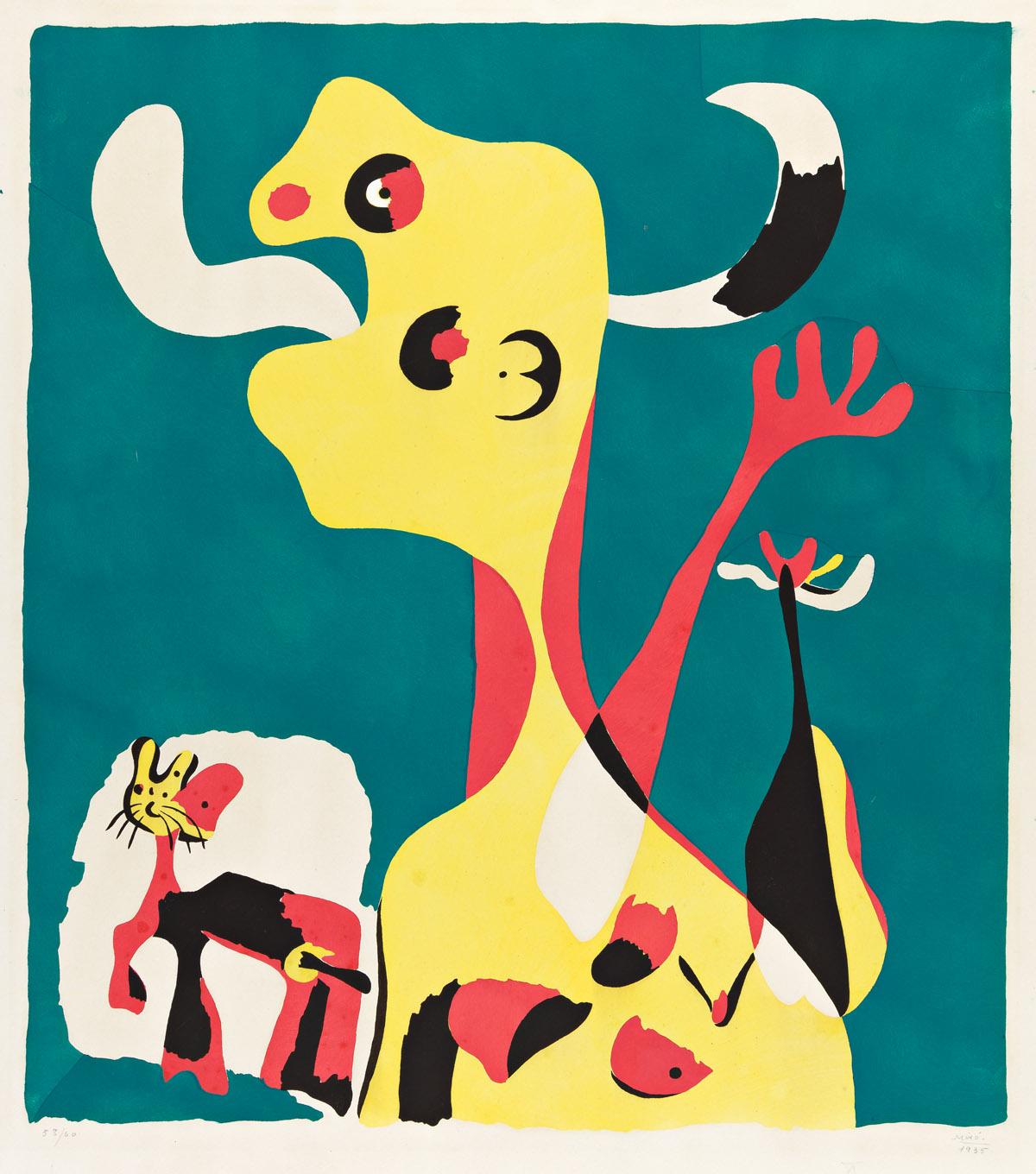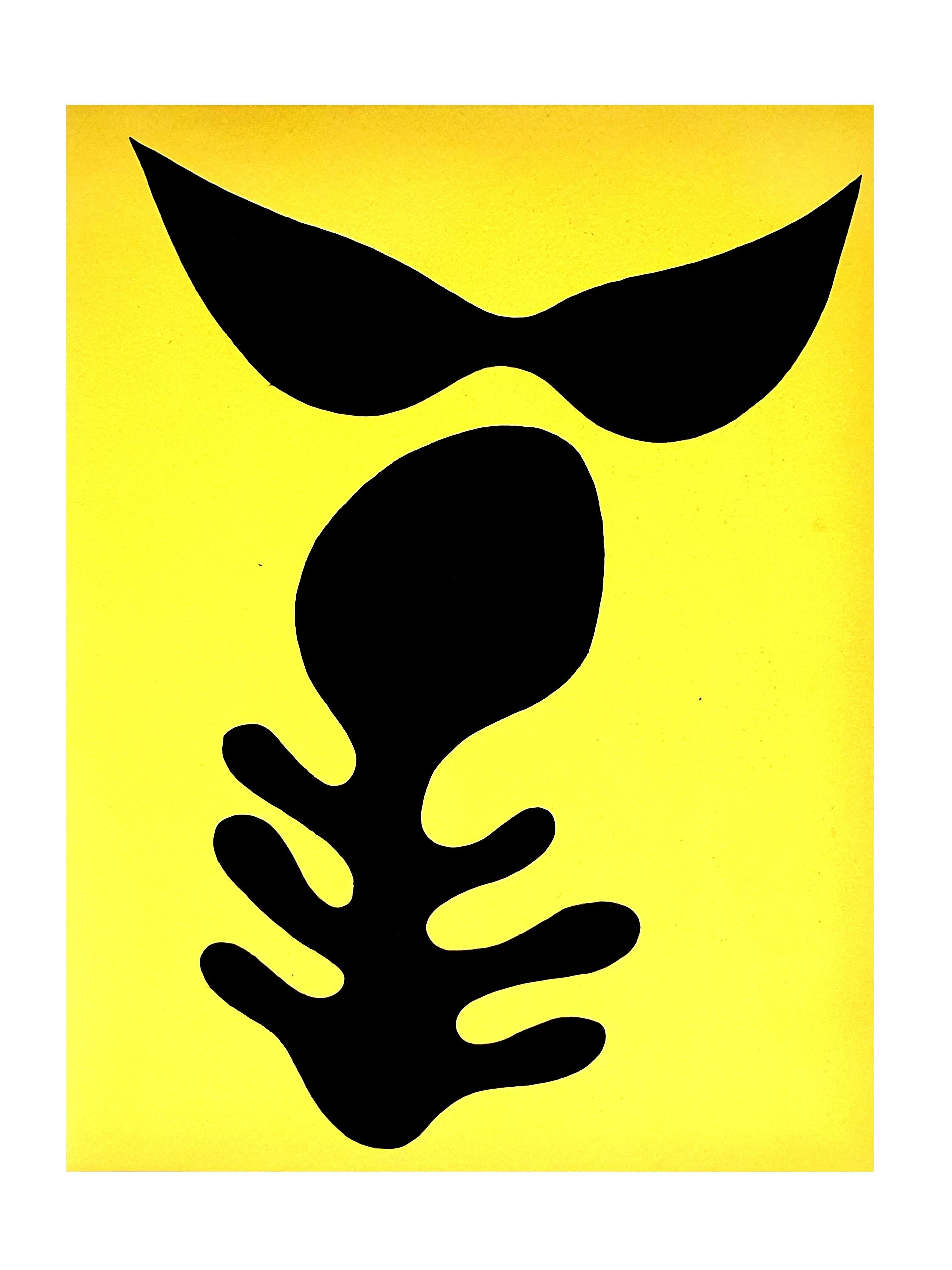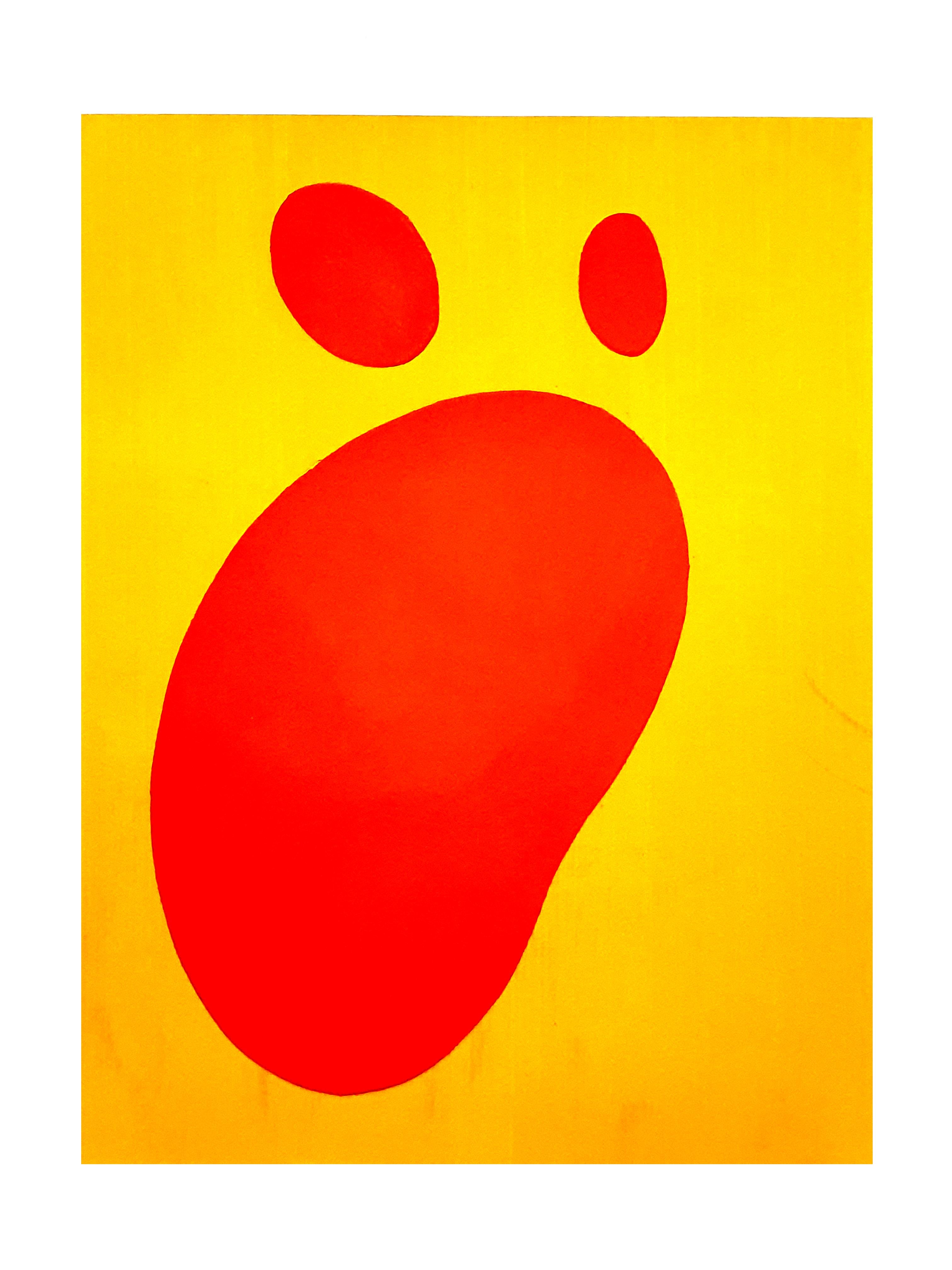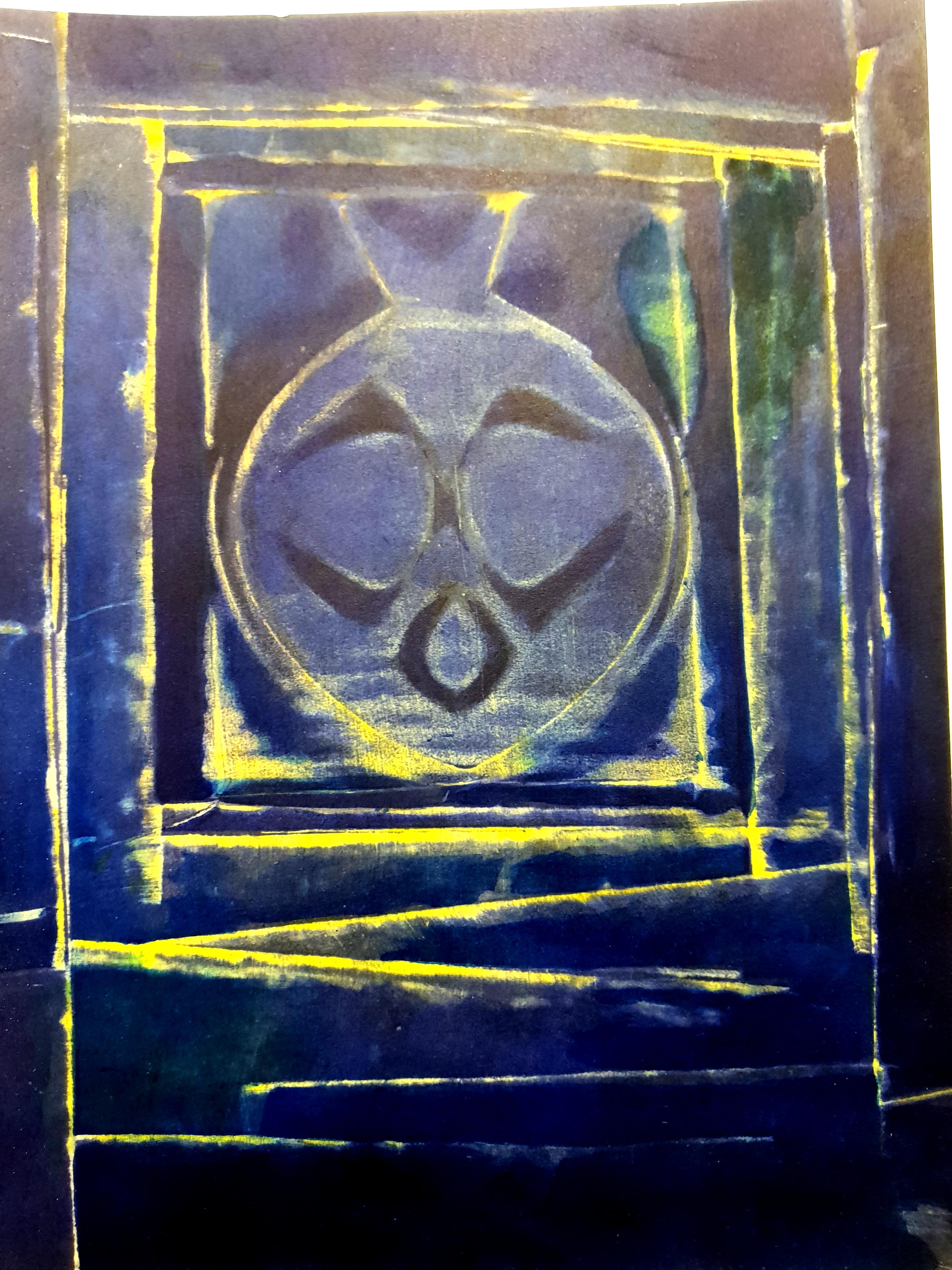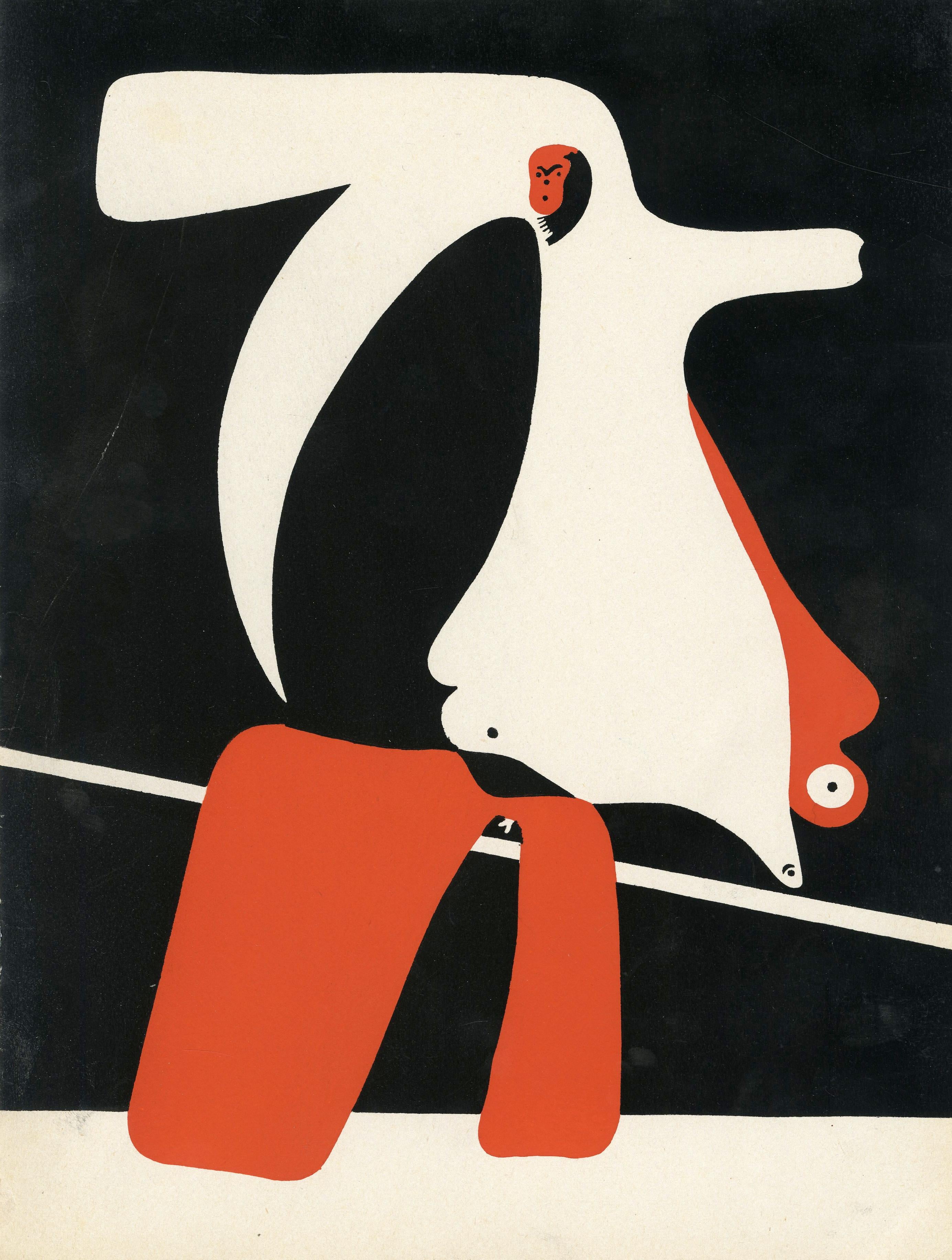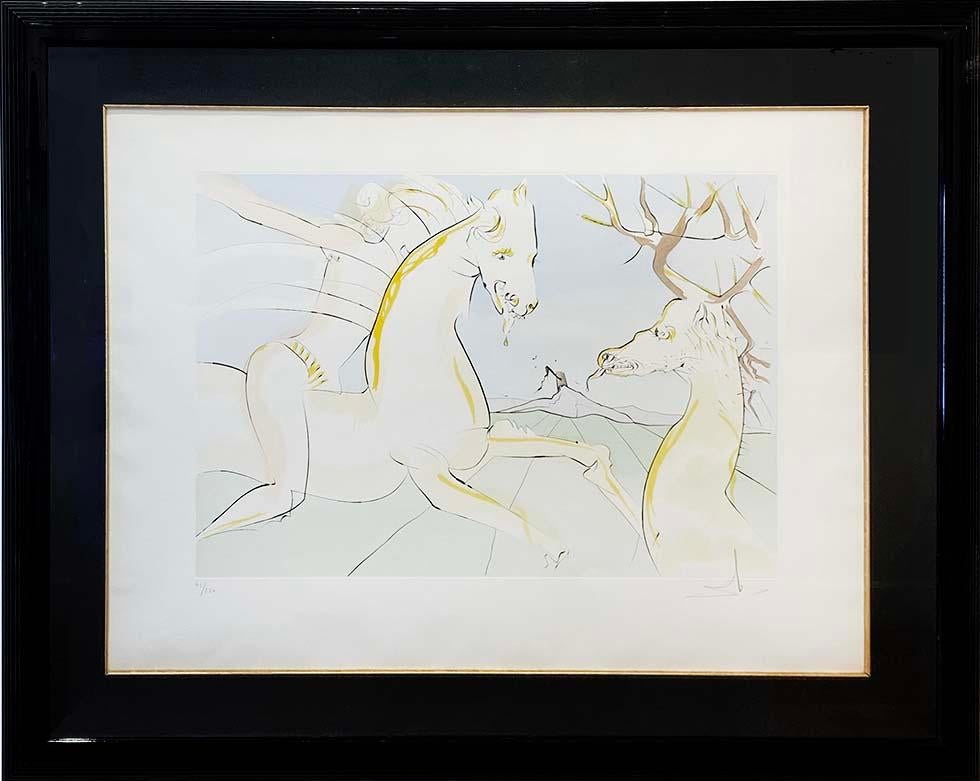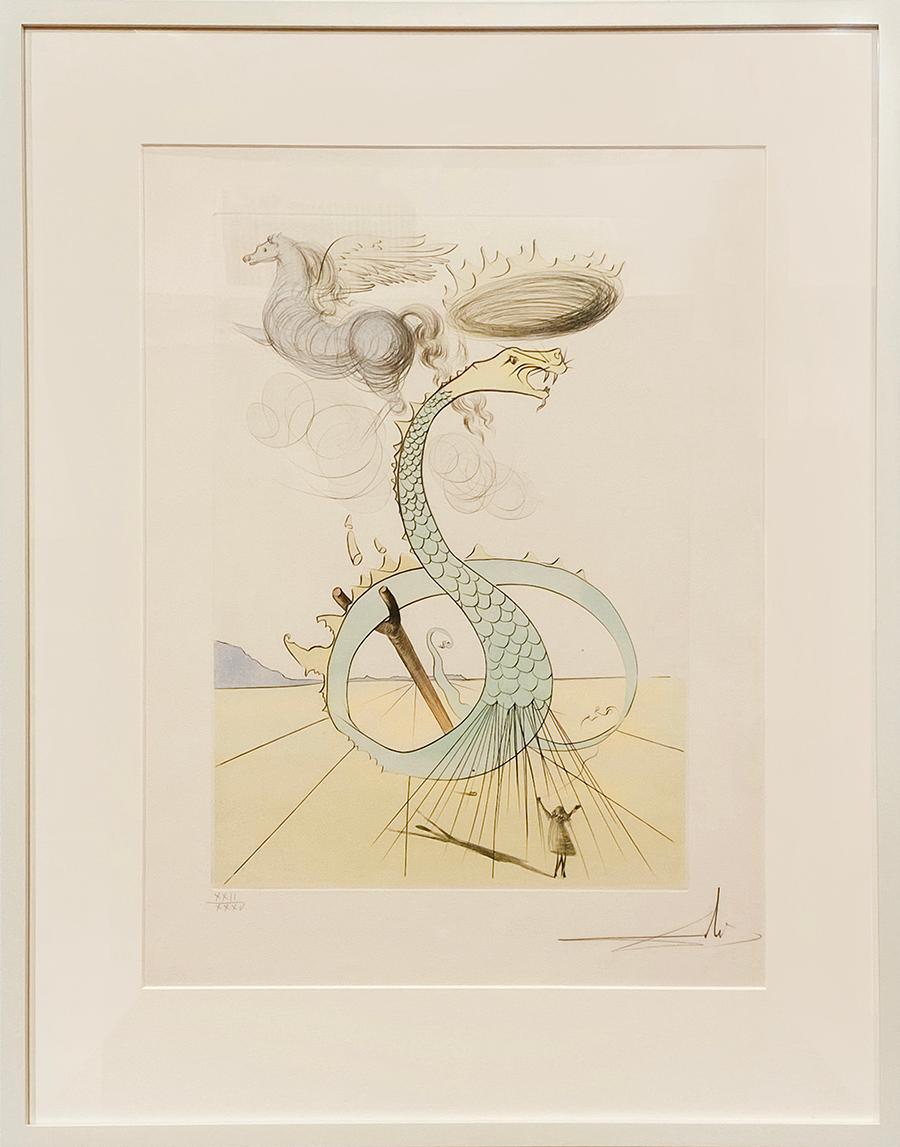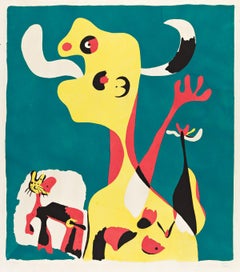
"Three Years of War" Original Vintage Russian WWII Propaganda Poster
View Similar Items
1 of 3
Kukryniksky"Three Years of War" Original Vintage Russian WWII Propaganda Poster1944
1944
About the Item
- Creator:Kukryniksky
- Creation Year:1944
- Dimensions:Height: 46.063 in (117 cm)Width: 48.11 in (122.2 cm)
- Medium:
- Movement & Style:
- Period:
- Condition:Fair (C+) Condition Poster. Color very rich. 3 horizontal folds, 5 vertical folds. Small creases throughout, aging in top and bottom borders. Wear consistent with age handmade Tass posters from World War II.
- Gallery Location:Boston, MA
- Reference Number:Seller: RUP22259 (TASS Window #993)1stDibs: LU133225921702
You May Also Like
- How to Make a RainbowBy Joseph CornellLocated in New York, NYA very good impression of this color screenprint with varnish and stencil. Artist's proof, aside from the edition of 125. Signed and inscribed "A.P." in pencil. Printed by Styria Stu...Category
1970s Surrealist Abstract Prints
MaterialsVarnish, Color, Screen, Stencil
- Femme et Chien devant la LuneBy Joan MiróLocated in New York, NYA superb impression of this very scarce, early color pochoir. Signed, dated "1935" and numbered 58/60 in pencil by Miro. Published by Adlan, Barcelona. Ink stamp on the reverse indic...Category
1930s Surrealist Abstract Prints
MaterialsColor, Stencil
- after Jean Arp - Moustaches et Squelette - PochoirBy Jean ArpLocated in Collonge Bellerive, Geneve, CHafter Jean Arp Moustaches et Squelette Executed in 1957 after the original artwork by the studios from Daniel Jacomet in Paris, France Pochoir Dimensions: 32 x 24 cm From the art re...Category
1950s Surrealist Abstract Prints
MaterialsStencil, Paper
- after Jean Arp - PochoirBy Jean ArpLocated in Collonge Bellerive, Geneve, CHafter Jean Arp - Pochoir 1957 Dimensions: 32 x 24 cm From the art review XXe siècle Unsigned and unumbered as issuedCategory
1950s Surrealist Abstract Prints
MaterialsStencil
- Jean Arp (after) - Composition - PochoirBy Jean ArpLocated in Collonge Bellerive, Geneve, CHJean Arp (after) - Composition - Pochoir 1958 Dimensions: 32 x 24 cm From the art revue XXe siècle Unsigned and unumbered as issuedCategory
1930s Surrealist Abstract Prints
MaterialsStencil
- (after) Max Ernst - Blue Bird - StencilBy (after) Max ErnstLocated in Collonge Bellerive, Geneve, CHMax Ernst (after) - Blue Bird - Stencil Published in the deluxe art review, XXe Siecle, 1958 Dimensions: 32 x 25 cm Publisher: G. di San Lazzaro. Max Ernst was born in Bruhl, a place near Cologne, in Germany. He was raised in a strict Catholic family, and both of his parents were disciplinarians who were dedicated to training their children into God-fearing and talented individuals. Although his father was deaf, Ernst learned so much from him, particularly when it comes to painting. In fact, much of his early years were lived under the inspiration of his father who was also a teacher. He was the one who introduced painting to Ernst at an early age. In 1914, Ernst attended the University of Bonn where he studied philosophy. However, he eventually dropped out of school because he was more interested in the arts. He claimed that his primary sources of interest included anything that had something to do with painting. Moreover, he became fascinated with psychology, among other subjects in school. Primarily, Ernst's love for painting was the main reason why he became deeply interested with this craft and decided to pursue it later on in his life. During his early years, he became familiar with the works of some of the greatest artists of all time including Claude Monet, Paul Cezanne and Vincent van Gogh. He was also drawn to themes such as fantasy and dream imagery, which were among the common subjects of the works of Giorgio de Chirico. During World War I, Ernst was forced to join the German Army, and he became a part of the artillery division that exposed him greatly to the drama of warfare. A soldier in the War, Ernst emerged deeply traumatized and highly critical of western culture. These charged sentiments directly fed into his vision of the modern world as irrational, an idea that became the basis of his artwork. Ernst's artistic vision, along with his humor and verve come through strongly in his Dada and Surrealists works; Ernst was a pioneer of both movements. It was Ernst's memories of the war and his childhood that helps him create absurd, yet interesting scenes in his artworks. Soon, he took his passion for the arts seriously when he returned to Germany after the war. With Jean Arp, a poet and artist, Ernst formed a group for artists in Cologne. He also developed a close relationship with fellow artists in Paris who propagated Avant-Garde artworks. In 1919, Ernst started creating some of his first collages, where he made use of various materials including illustrated catalogs and some manuals that produced a somewhat futuristic image. His unique masterpieces allowed Ernst to create his very own world of dreams and fantasy, which eventually helped heal his personal issues and trauma. In addition to painting and creating collages, Ernst also edited some journals. He also made a few sculptures that were rather queer in appearance. In 1920s, influenced by the writings of psychologist Sigmund Freud, the literary, intellectual, and artistic movement called Surrealism sought a revolution against the constraints of the rational mind; and by extension, they saw the rules of a society as oppressive. Surrealism also embraces a Marxist ideology that demands an orthodox approach to history as a product of the material interaction of collective interests, and many renown Surrealism artists later on became 20th century Counterculture symbols such as Marxist Che Guevara. In 1922 Ernst moved to Paris, where the surrealists were gathering around Andre Breton. In 1923 Ernst finished Men Shall Know Nothing of This, known as the first Surrealist painting. Ernst was one of the first artists who apply The Interpretation of Dreams by Freud to investigate his deep psyche in order to explore the source of his own creativity. While turning inwards unto himself, Ernst was also tapping into the universal unconscious with its common dream imagery. Despite his strange styles, Ernst gained quite a reputation that earned him some followers throughout his life. He even helped shape the trend of American art during the mid-century, thanks to his brilliant and extraordinary ideas that were unlike those of other artists during his time. Ernst also became friends with Peggy Guggenheim, which inspired him to develop close ties with the abstract expressionists. When Ernst lived in Sedona, he became deeply fascinated with the Southwest Native American navajo art. In fact, the technique used in this artwork inspired him and paved the way for him to create paintings that depicted this style. Thus, Ernst became a main figure of this art technique, including the rituals and spiritual traditions included in this form of art. Pollock, aside from the other younger generations of abstract expressionists, was also inspired by sand painting of the Southwest...Category
1950s Surrealist Animal Prints
MaterialsStencil
Recently Viewed
View AllMore Ways To Browse
Original Vintage German Propaganda Poster
Rally Poster
Provence Vintage Poster
Poster Normandy
The Normandy Poster Original
Poster Rally Vintage
Post Wwii Poster
Soviet Wwii Poster
Vintage Thunderbolt
Vintage Original Posters Normandy
Antique Horse Print
Antique Horse Prints
Horse Prints Antique
1972 Posters
Original Vintage Art Exhibition Poster
Retro Poster Company
Vintage Husband And Wife
Picasso Catalogue

